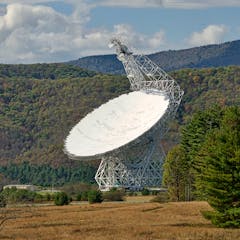
Articles on Astronomy
Displaying 141 - 160 of 813 articles

To date, we have not heard from any aliens. Nor have we seen any – but here are the fascinating projects working to change that.

With the help of thousands of citizen scientists, a new study measured exactly how much brighter night skies are getting every year.

The discovery of massive, early galaxies could force scientists to rethink how the first galaxies formed after the Big Bang.

Astronomers have found that mysterious dark energy may originate in black holes.

The Solar System as we know it doesn’t really make sense without a ninth planet. So then why can’t we find it?

An astronomer takes us on a tour of the universe to learn about the birth of stars and planets and how they get their spin.

With more than 100 lunar missions planned in coming years, space junk near the Moon could become an issue for humanity. No agency tracks lunar space junk, so two astronomers decided to do it themselves.

While we can’t see inside a black hole, we can spot the intensely bright glowing disc that surrounds one. Now, we might better understand why these discs appear to ‘twinkle’.

Can artificial intelligence transform the search for alien intelligence?

Skies in the Northern Hemisphere have been graced by a rare, green comet. Now, it’s our turn to look for it in Australia – but the view will be dimming rapidly.

Discovered less than a week ago, the truck-sized asteroid skimmed much closer to Earth’s surface than most satellites.

Since ancient times, the stars have been set to music. Modern technology now enables scientists to convert images of space into real compositions.

Our galaxy should be full of traces of dead stars. Until now, we have found surprisingly few of these supernova remnants, but a new telescope collaboration is changing that.

NASA has been gaining momentum in recent years as investment into space has ramped up in the US. In 2022, missions dealt with the farthest, closest, hottest and coldest conditions in the universe.

The sky looks blue on a sunny day – but at night we can see the faint glow of its true colour.

A year on since the historic launch of the most powerful infrared telescope in human history, we admire and explore some of the best images it delivered in 2022.

Gamma-ray bursts occur when a massive star explodes or when two neutron stars merge. A newly discovered burst has puzzled astronomers, as it lasted much longer than astronomers would have expected.

The dead of winter, when the longest night of the year takes place, has also traditionally been celebrated as a time of renewal and reverence.

Astrology and astronomy were once practiced side by side by scientists like Galileo and Kepler. And they’re more similar than you might think.

It has been one year since the launch of the James Webb Space Telescope and six months since the first pictures were released. Astronomers are already learning unexpected things about the early universe.





